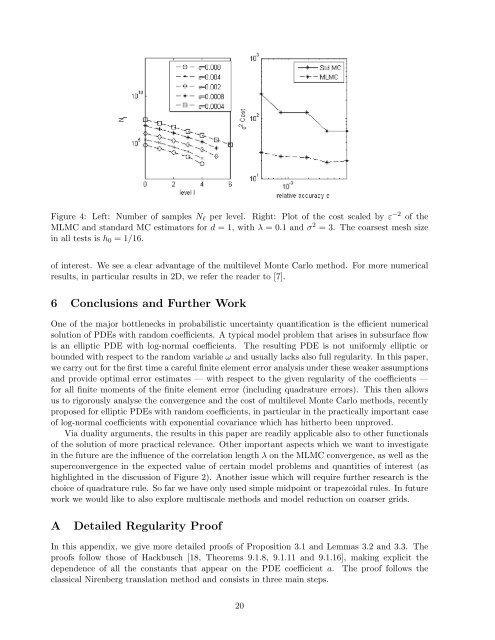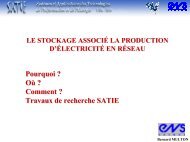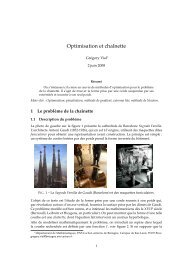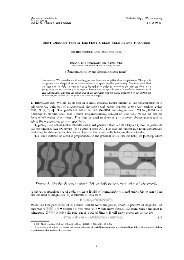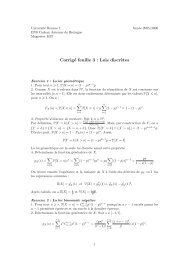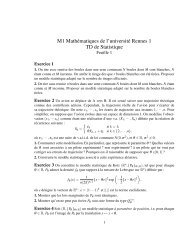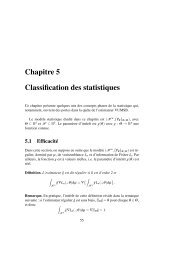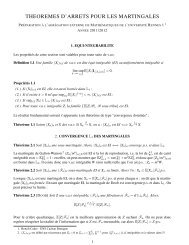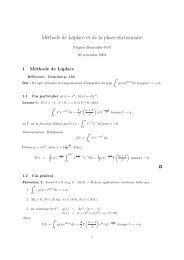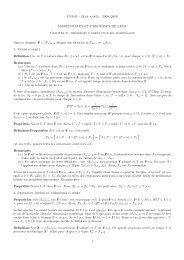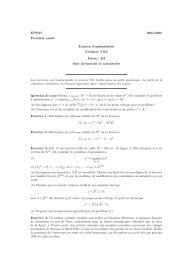Bath Institute For Complex Systems - ENS de Cachan - Antenne de ...
Bath Institute For Complex Systems - ENS de Cachan - Antenne de ...
Bath Institute For Complex Systems - ENS de Cachan - Antenne de ...
Create successful ePaper yourself
Turn your PDF publications into a flip-book with our unique Google optimized e-Paper software.
Figure 4: Left: Number of samples N l per level. Right: Plot of the cost scaled by ε −2 of theMLMC and standard MC estimators for d = 1, with λ = 0.1 and σ 2 = 3. The coarsest mesh sizein all tests is h 0 = 1/16.of interest. We see a clear advantage of the multilevel Monte Carlo method. <strong>For</strong> more numericalresults, in particular results in 2D, we refer the rea<strong>de</strong>r to [7].6 Conclusions and Further WorkOne of the major bottlenecks in probabilistic uncertainty quantification is the efficient numericalsolution of PDEs with random coefficients. A typical mo<strong>de</strong>l problem that arises in subsurface flowis an elliptic PDE with log-normal coefficients. The resulting PDE is not uniformly elliptic orboun<strong>de</strong>d with respect to the random variable ω and usually lacks also full regularity. In this paper,we carry out for the first time a careful finite element error analysis un<strong>de</strong>r these weaker assumptionsand provi<strong>de</strong> optimal error estimates — with respect to the given regularity of the coefficients —for all finite moments of the finite element error (including quadrature errors). This then allowsus to rigorously analyse the convergence and the cost of multilevel Monte Carlo methods, recentlyproposed for elliptic PDEs with random coefficients, in particular in the practically important caseof log-normal coefficients with exponential covariance which has hitherto been unproved.Via duality arguments, the results in this paper are readily applicable also to other functionalsof the solution of more practical relevance. Other important aspects which we want to investigatein the future are the influence of the correlation length λ on the MLMC convergence, as well as thesuperconvergence in the expected value of certain mo<strong>de</strong>l problems and quantities of interest (ashighlighted in the discussion of Figure 2). Another issue which will require further research is thechoice of quadrature rule. So far we have only used simple midpoint or trapezoidal rules. In futurework we would like to also explore multiscale methods and mo<strong>de</strong>l reduction on coarser grids.ADetailed Regularity ProofIn this appendix, we give more <strong>de</strong>tailed proofs of Proposition 3.1 and Lemmas 3.2 and 3.3. Theproofs follow those of Hackbusch [18, Theorems 9.1.8, 9.1.11 and 9.1.16], making explicit the<strong>de</strong>pen<strong>de</strong>nce of all the constants that appear on the PDE coefficient a. The proof follows theclassical Nirenberg translation method and consists in three main steps.20


